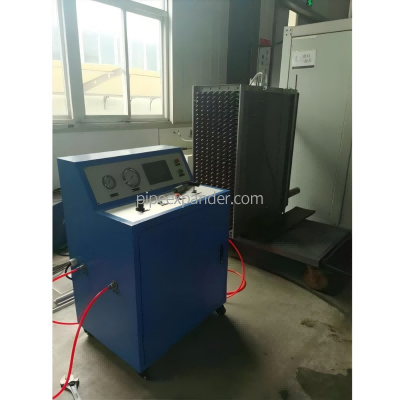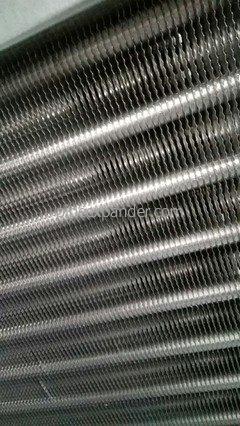

Radiator water expansion machine
Brief introduction
Radiator water expansion machine belongs to a type of hydraulic press, is a new type of water expansion hydraulic machine to replace the traditional ordinary rubber expansion. It is a kind of machine that uses emulsified water as the liquid transmission medium and transforms the mechanical energy of the hydraulic press into the kinetic energy of water to process products of stainless steel, aluminum, copper, iron and other materials. For internal high pressure expansion molding processes, such as: extrusion, molding, stamping and so on.
Principle
Its principle is the use of PASCAL's law made of the use of liquid pressure transmission machinery, there are many types. Of course, the use is also varied according to the need. Such as according to the type of liquid to transfer pressure, there are two categories of hydraulic press and hydraulic press. The water pressure produced by the radiator water expansion machine is large, and it is often used for internal high pressure expansion. Water expansion hydraulic press is divided into horizontal radiator water expansion machine and vertical radiator water expansion machine. Both can be moulded.
Usage
Radiator water expansion machine is a new type of machine which uses emulsified water as liquid as working medium and realizes various processes through energy conversion. Although it belongs to a kind of hydraulic press, the radiator water expansion machine will slowly be in a leading position in the future market. Water as the kinetic energy medium is called the radiator water expansion machine (hydraulic press), and oil as the kinetic energy medium is called the oil press. The general weight unit of the radiator water expansion machine is KN or tonnage T, and the water pressure is Mpa. The larger the tonnage, the greater the pressure of water, the current domestic swelling pressure of more than 250Mpa. Other hydraulic press in 5 ~ 25Mpa.
Brief history
In 1795, J. Brammer of the United Kingdom invented the hydraulic press by applying PASCAL's principle, which was used for packaging and squeezing vegetable oil. By the mid-19th century, the United Kingdom began to use hydraulic presses for forging, and hydraulic presses gradually replaced the super-large steam forging hammer. By the end of the 19th century, the United States made 126,000 kN free forging hydraulic presses. Since then, the world has produced more than 20 sets of 100,000 million cattle free forging hydraulic press, of which there are 2 sets made in China (see color picture). With the emergence and improvement of electric high pressure pumps, forging hydraulic presses are also developing in the direction of smaller tonnage. After the 1950s, a small fast forging hydraulic press appeared, which could carry out the work equivalent to 30 to 50 kN forging hammer. In the 1940s, Germany made 180,000 kN of giant die forging hydraulic press, and since then the world has made more than 180,000 kN of die forging hydraulic press 18 sets, of which one made in China is 300,000 kN.
Technological process
1. Put the tube embryo into the mold.
2. The slider drives the upper die and presses down, and the final closing and releasing die.
3. The two horizontal plungers move forward and flush water into the tube embryo.
4. The two side cylinders continue to move forward synchronously, and extrude the embryo tube, the supercharger input ultra-high pressure liquid (emulsified water) into the embryo tube, at this time the hydraulic pressure of up to 250Mpa. Simultaneously upset-extruded and water-expanded tube embryo. If according to customer requirements, you can make a lower charging cylinder to support pipe fittings and charging and rise and fall with it.
5. If the pressure exceeds the pressure, the hydraulic pressure will automatically relieve the pressure within a certain time.
The upsetting-extrusion process deforms under the combined action of three or multiple directions of pressure, which can improve the plasticity of metal forming.